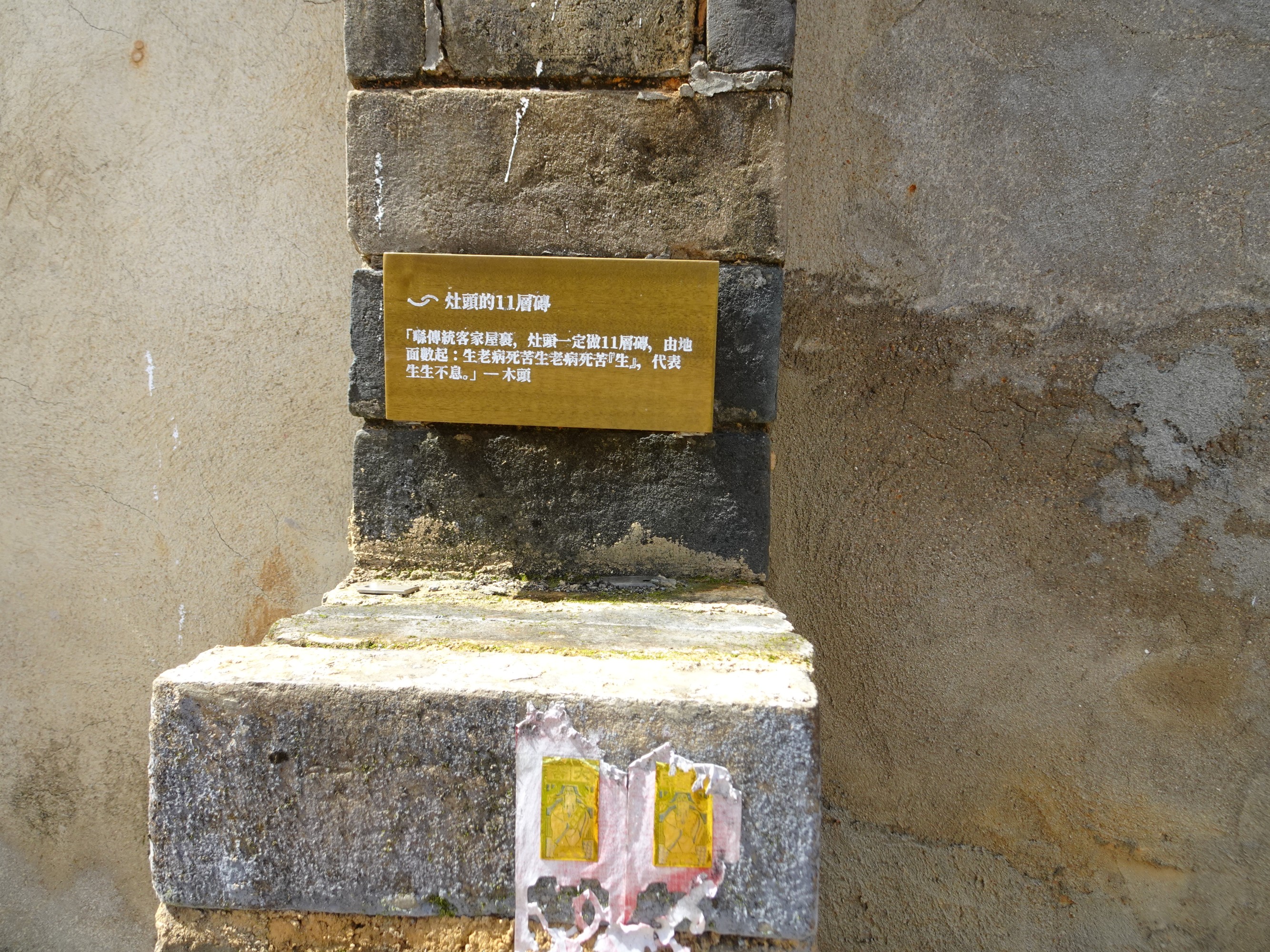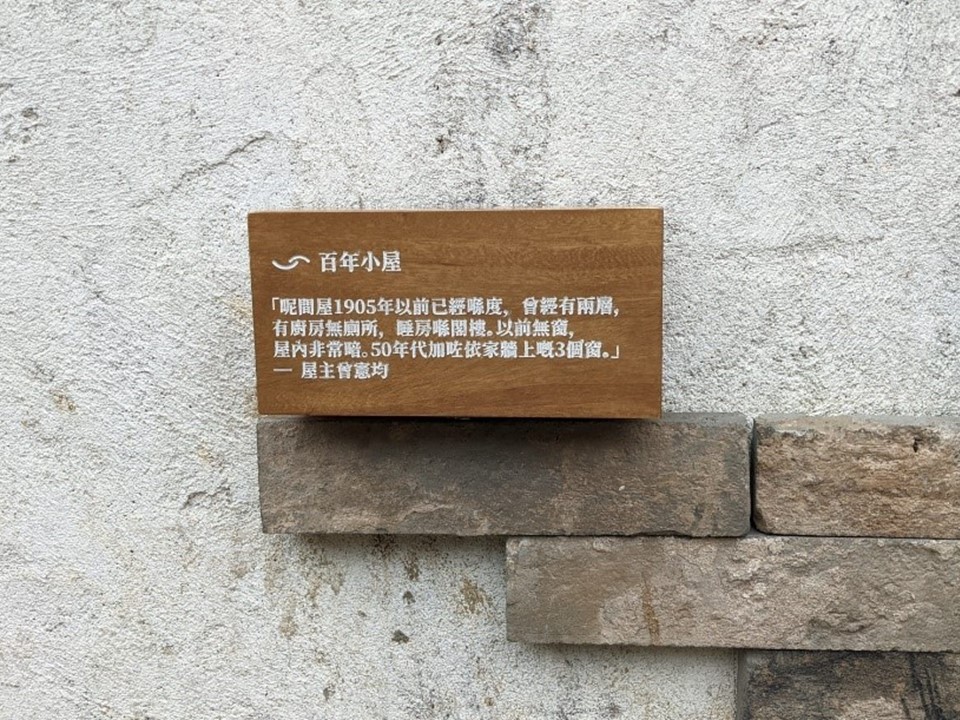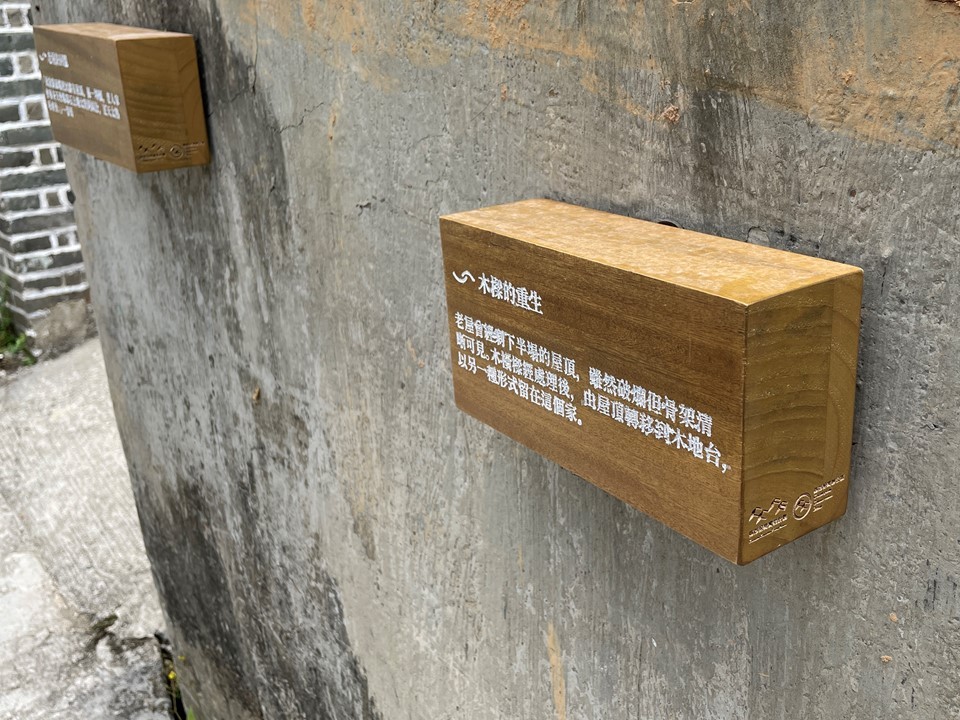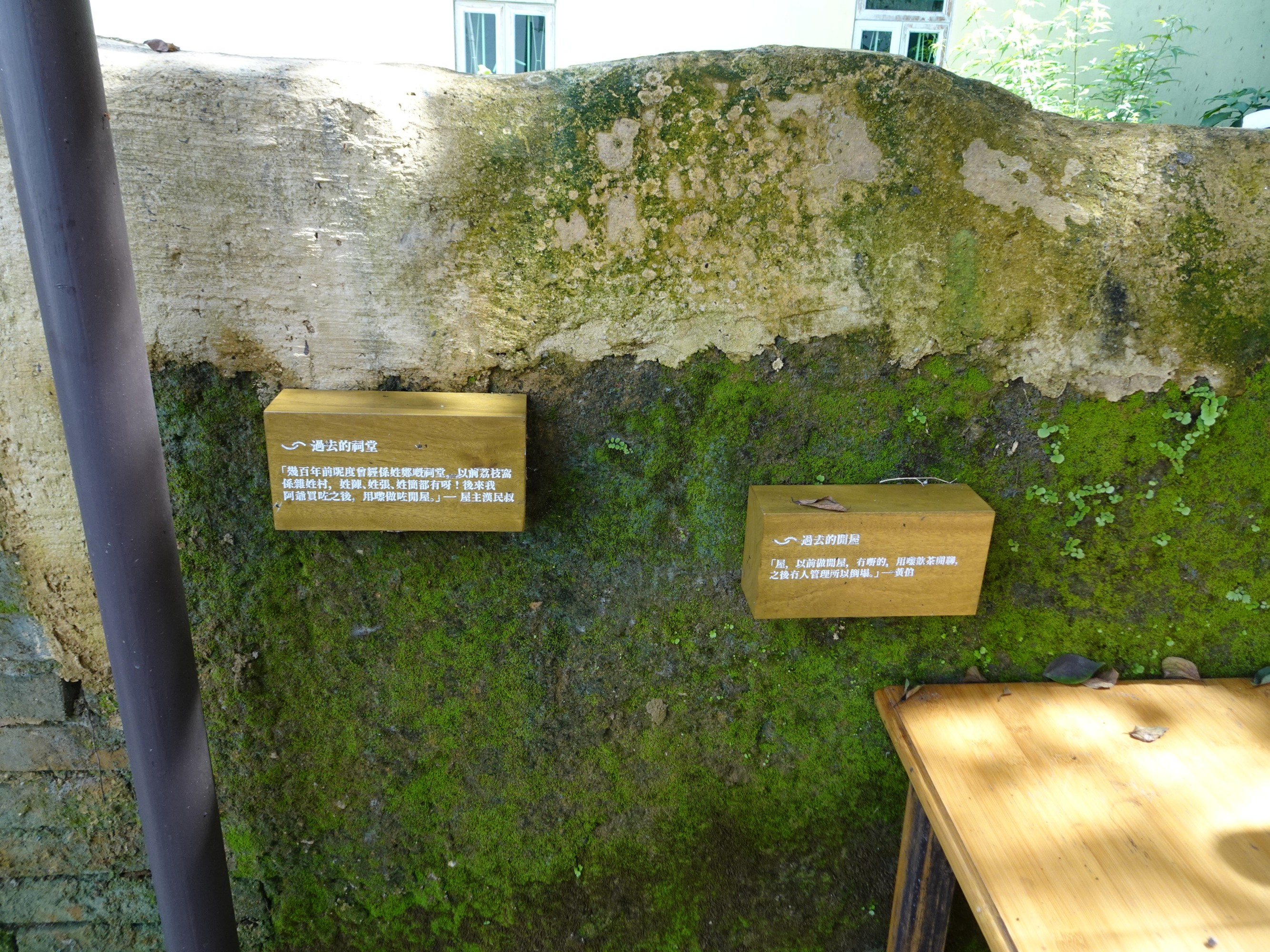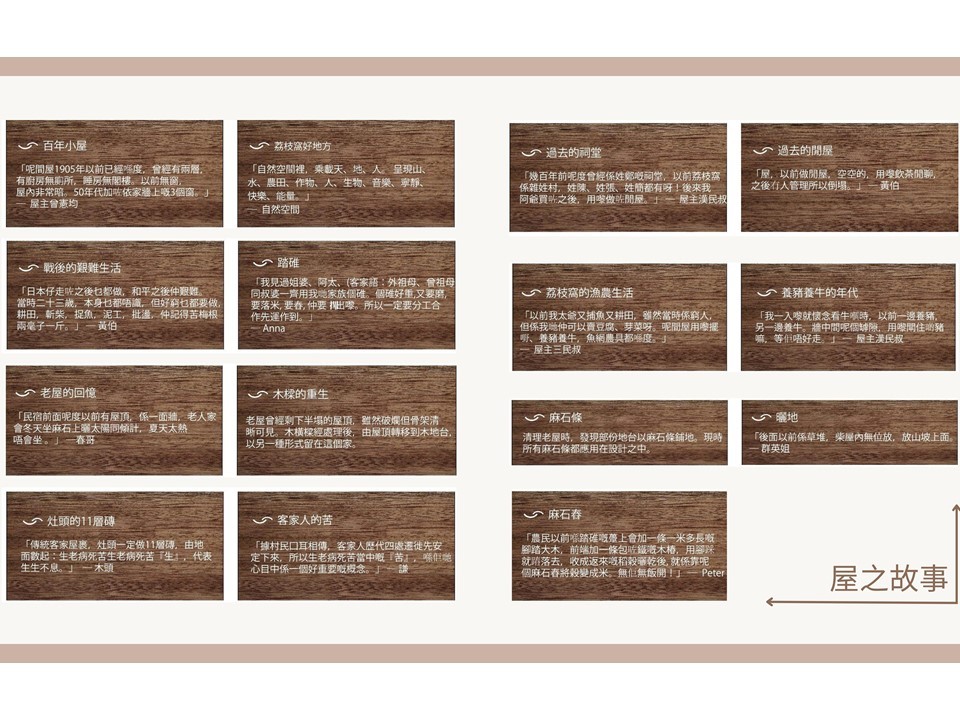History of the Village Houses
The three village houses restored by the project have long histories, carrying the daily lives of past villagers and witnessing the history of Lai Chi Wo Village.
One of them is a century-old house:
"This house has been here since before 1905. It used to have two floors, a kitchen but no toilet, and the bedroom was in the attic. There were no windows before, so it was very dark inside. In the 1950s, three windows were added to the wall." - Owner Mr. Tsang Hin-kwan
Another one used to be an ancestral hall:
"Several hundred years ago, this was the ancestral hall of the Cheng family. Lai Chi Wo used to be a village of multiple families, with surnames of Chan, Cheung, and even Kan! Later, my grandfather bought it and used it as a secondary home." - Owner Uncle Hon-man
"My great-grandfather used to fish and farm. Although we were poor at that time, we could still sell tofu and bean sprouts. This house was used for storage, raising pigs and cows, and keeping fishing nets and farming tools." - Owner Uncle Sam-man
There is also a half-collapsed old house full of memories, whose roof beams were "reborn" after restoration:
"In front of the guesthouse, there used to be a semi-detached village house with a roof. The elderly would sit on the granite slabs in winter to sunbathe and chat, but it was too hot to sit in summer." — Chun Gor
To give the public a deeper understanding of traditional Hakka architecture, the village garden has installed information signs in different locations, introducing the structure, layout, and basic residential functions of traditional Hakka village houses, detailing their history and the daily lives of villagers. Everyone is welcome to visit the village garden, look for the information signs, explore the past lives of Lai Chi Wo village, and learn about the stories of the village houses.
 Home
Home






